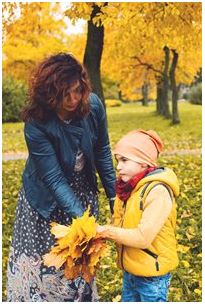 February 2024 Message Regarding Congressional Appropriation for Intervener Services:
February 2024 Message Regarding Congressional Appropriation for Intervener Services:
In January 2023, the U.S. Congress appropriated $1 million for state deafblind projects and the National Center on Deafblindness to "strengthen support of the abilities and needs of children with deafblindness, including through intervener services." Although Pennsylvania does not yet recognize the role of intervener as a formal position within our educational system, there are several school districts and programs in our state who are providing intervener services to ensure that our students who are deafblind (i.e. students with combined vision and hearing needs) have equitable access to their education.
Intervener services can support schools to meet the challenge of providing students who are deafblind with access to communication and information they are unable to gather via vision and hearing. Without access to communication and information - regardless of a student’s placement or complexity of access needs (i.e. emerging to proficient) - they cannot fully participate in the general education curriculum or receive a free and appropriate public education, as required by IDEA.
The factsheet linked below on intervener services includes additional resources. Please share this with your IEP teams - including family members - serving children who are deafblind. Do not hesitate to contact the Pennsylvania DeafBlind Project if you have questions or would like additional information.
Pennsylvania DeafBlind Project
Phone: (610) 265-7321
TTY: (484) 685-0063
Email: PADBProject@pattan.net
Other Resources:
.JPG?lang=en-US&width=345&height=341) In educational environments, intervener services are provided by an individual - typically a paraeducator - who has received specialized training in deafblindness and the process of intervention. For students who are deafblind (i.e. have combined vision and hearing needs), intervener services provide a bridge to the outside world by providing access to information and communication. In addition, they facilitate the development of the student’s social and emotional well-being. Intervener services can provide consistent one-to-one support to a student who is deafblind throughout their instructional day, working under the guidance and direction of the student’s teachers who are responsible for ensuring the implementation of the student’s IEP.
In educational environments, intervener services are provided by an individual - typically a paraeducator - who has received specialized training in deafblindness and the process of intervention. For students who are deafblind (i.e. have combined vision and hearing needs), intervener services provide a bridge to the outside world by providing access to information and communication. In addition, they facilitate the development of the student’s social and emotional well-being. Intervener services can provide consistent one-to-one support to a student who is deafblind throughout their instructional day, working under the guidance and direction of the student’s teachers who are responsible for ensuring the implementation of the student’s IEP.
-
The Family Guide to Interveners for Children with Combined Vision and Hearing Loss - this booklet addresses the following questions:
-
What is deafblindness?
-
What are intervener services?
-
What is effective intervention for children who are deafblind, and what role do intervener services play in providing that intervention?
-
How can the need for intervener services be determined through the Individualized Education Program (IEP) process?
-
Are Intervener Services Appropriate for Your Student With Deaf-Blindness?: An IEP Team Discussion Guide - the purpose of this discussion guide from the National Center on Deafblindness is to help IEP teams make informed decisions about whether intervener services are appropriate for a particular student.
-
Comparison of Possible Supports for Students Who Are DeafBlind - every student who is DeafBlind has unique needs, so supports necessary to provide access will vary from student to student. Think about the student’s support needs. Do the support needs change in different environments? If so, the level of support necessary could vary across environments. Supports such as intervener services, paraprofessionals, and/or interpreters can play a critical role in meeting the educational needs of a student who is DeafBlind. This resource describes each role to assist the team in determining the specific supports for a student who is DeafBlind.